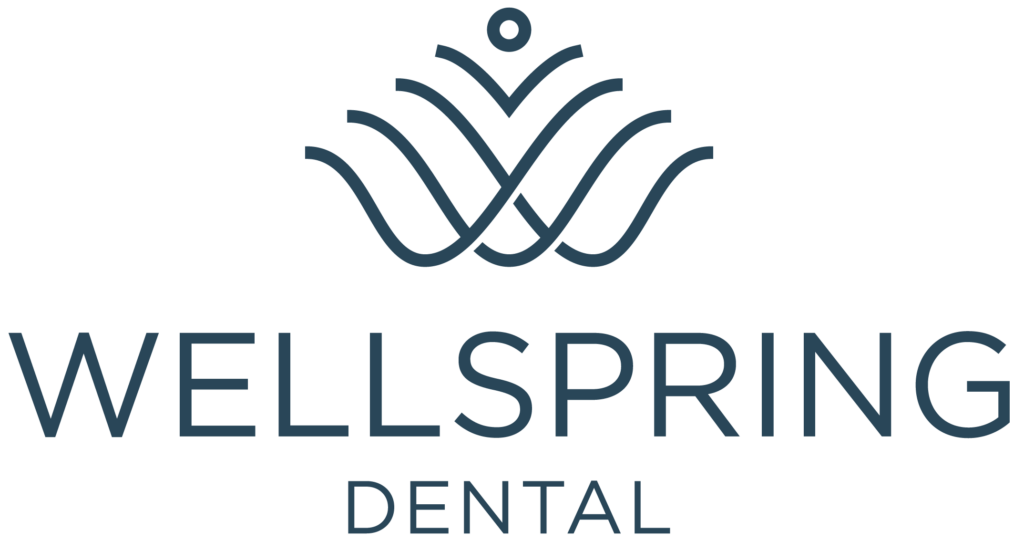THE importance OF BREATHING & SLEEPING
AIRWAY HEALTH SCREENING AND CONSULTATION
there are feeding, breathing or sleeping concerns.
WHAT IS A restricted airway AND HOW DOES IT PRESENT IN BOTH CILDREN & ADULTS?

MYOFUNCTIONAL
ORTHODONTICS
FRENULOPLASTY

INFANT FRENECTOMY
Performing a frenectomy is only one aspect of treating tethered oral tissues- we also need to teach the tongue how to move in a new way and release tension in the body. While some may notice an immediate change, usually improvement happens slowly over time when combined with the appropriate therapy.
Tips for your inftant frenectomy visit:
- We will have comfortable chairs available, but please bring any pillows or accessories you may need to aid in nursing.
- You will have a private room to nurse.
- Please have an alternate feeding plan available for the initial healing period. While many babies latch and feed right away, it is possible baby may not want to nurse immediately
- Freezing milk in flat 1 oz increments to make breastmilk ice chips can help with wound care/You will be given a small syringe to take home. Having milk stored (either frozen orrefrigerated) to fill the syringe and apply to the site can also help with wound care.
- Ideally baby should come “ready for a snack”. Not starving, and not having just eaten a big meal.
- Have infant Tylenol (or your analgesic of choice) ready at home
Infant Frenectomy FAQs
The tongue is a unique structure that falls in the scope of practice of both Ear Nose and Throat doctors as well as dentists. Both are licensed to treat tethered oral tissues, but more important is their post-graduate training. Tethered oral tissue diagnosis and treatment is not taught in medical or dental school, so providers must seek additional training to be knowledgeable in this area.
Those performing the procedure are knowledgeable about the anatomy. How babies feed and use their tongue involves specialties like Speech Pathologists, Lactation Consultants, and Occupational Therapists. Both are important in achieving best results.
TETHERED ORAL TISSUE SYMPTOMS
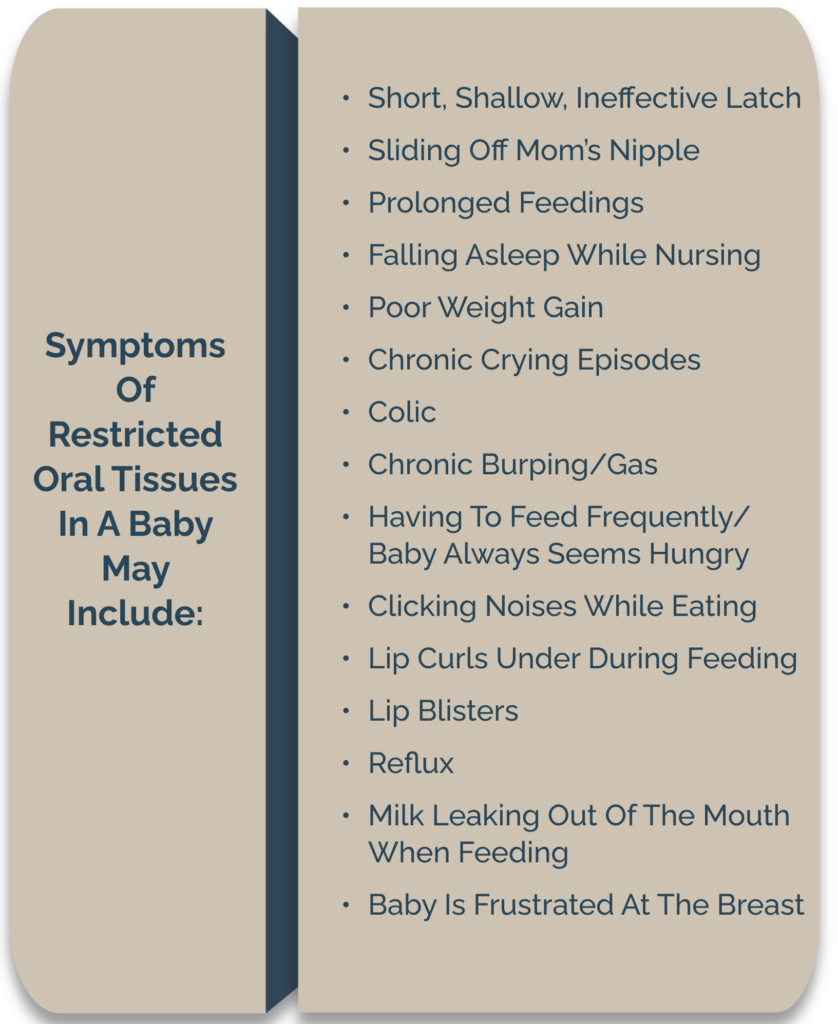
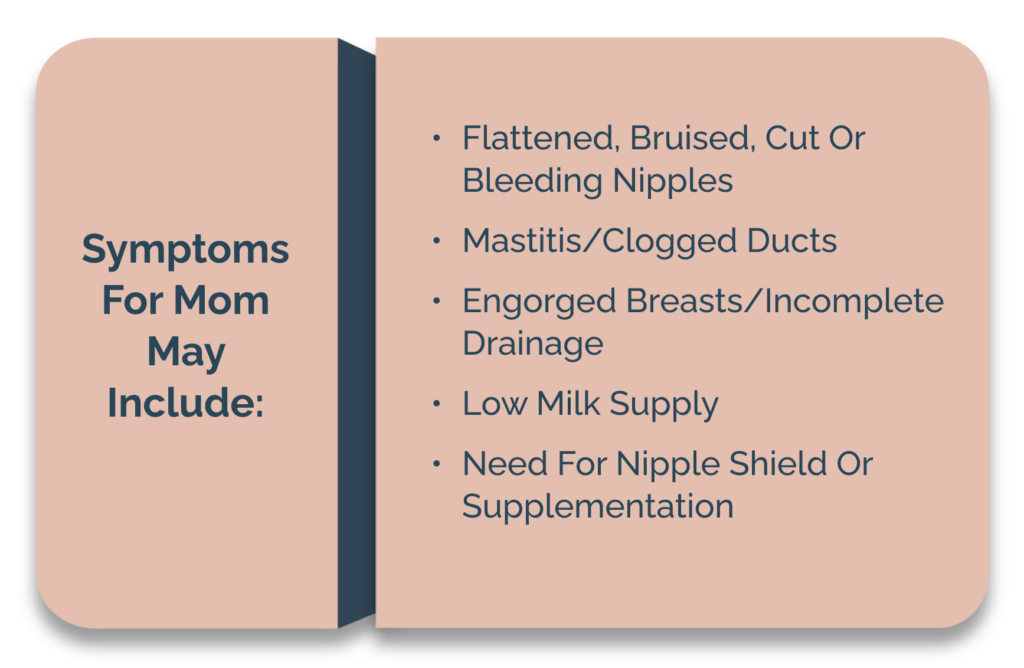
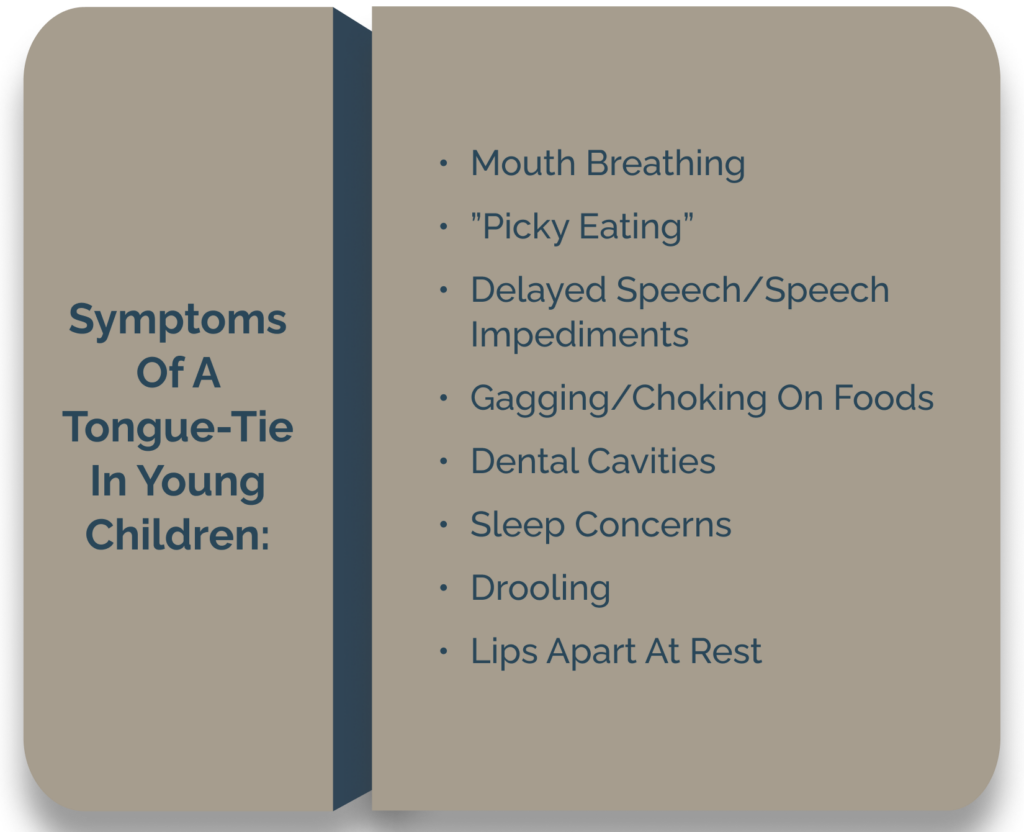
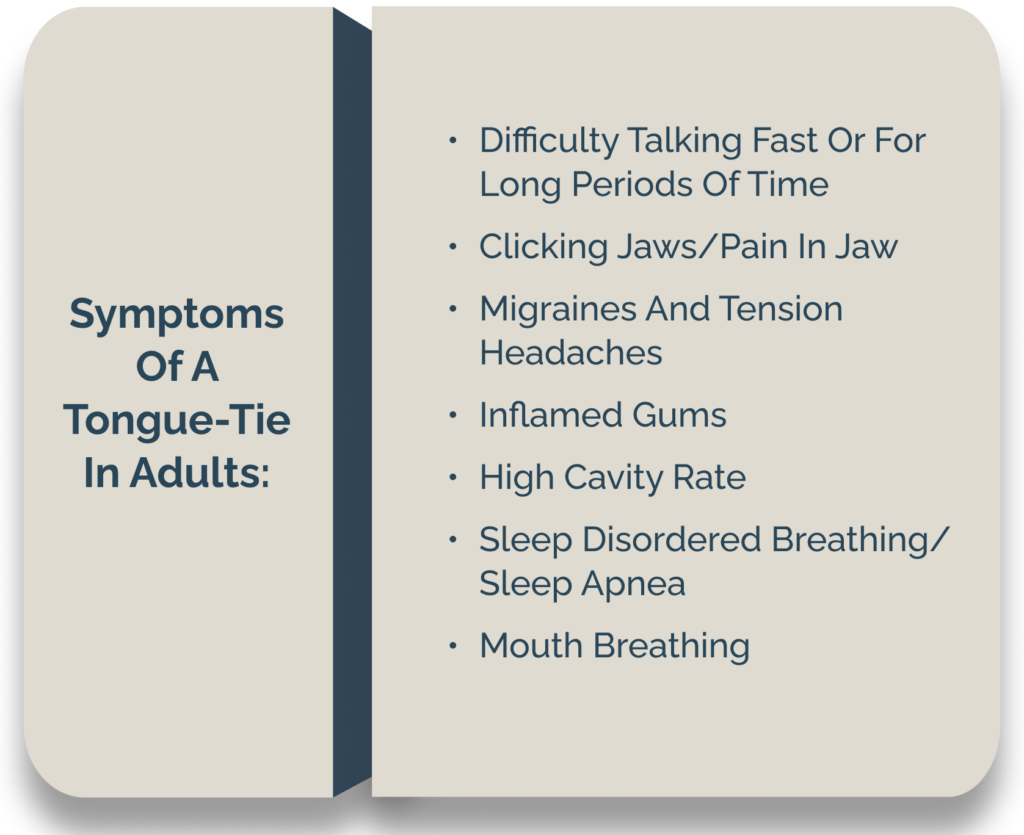
CONSEQUENCES OF untreated
TONGUE TIES
Infants
- Inefficient feeding
- Poor weight gain
Children
- Increased risk of cavities
- Dental crowding, more narrow jaws
- Vertical facial development, leading to a more narrow airway
- Poor sleep quality, which can lead to poor performance in school/sports/behavior
- Speech delays/difficulties
- Mouth breathing
Adults
- Crowded teeth, narrow jaws
- Mouth breathing
- Hyperactive gag reflex
- Snoring
- Unrestful sleep
